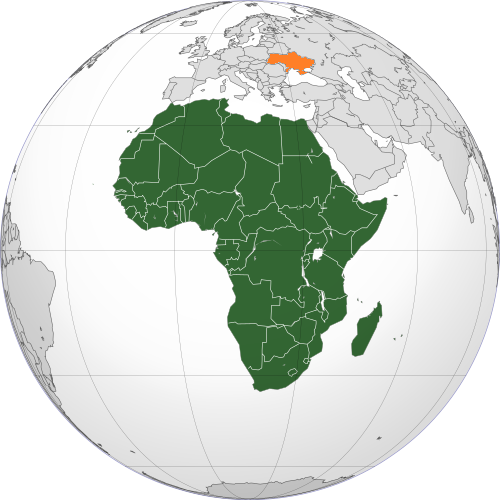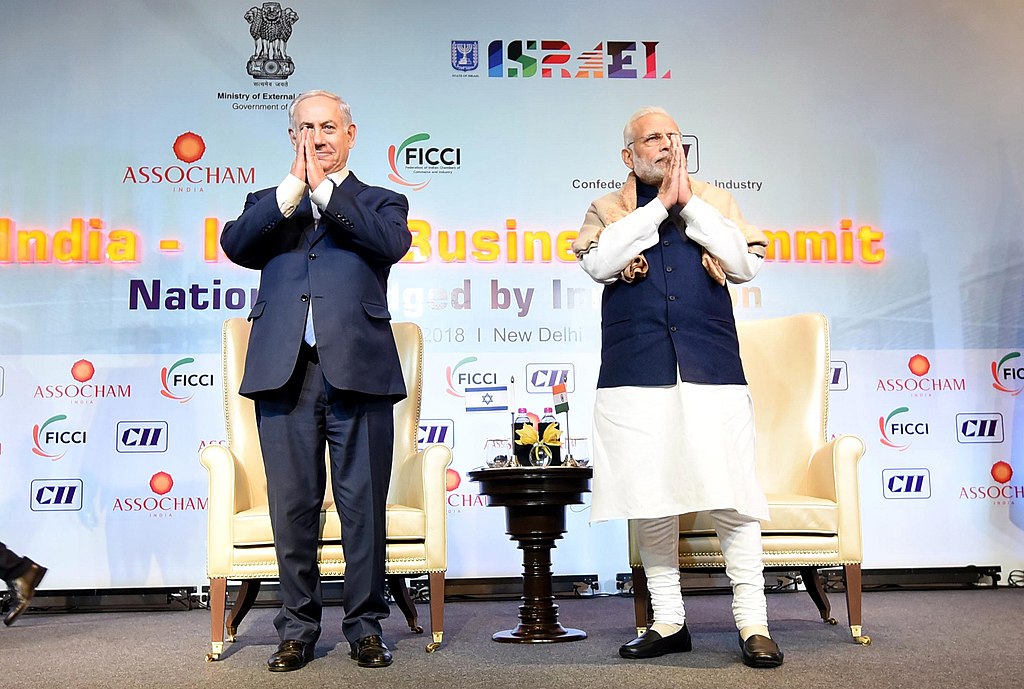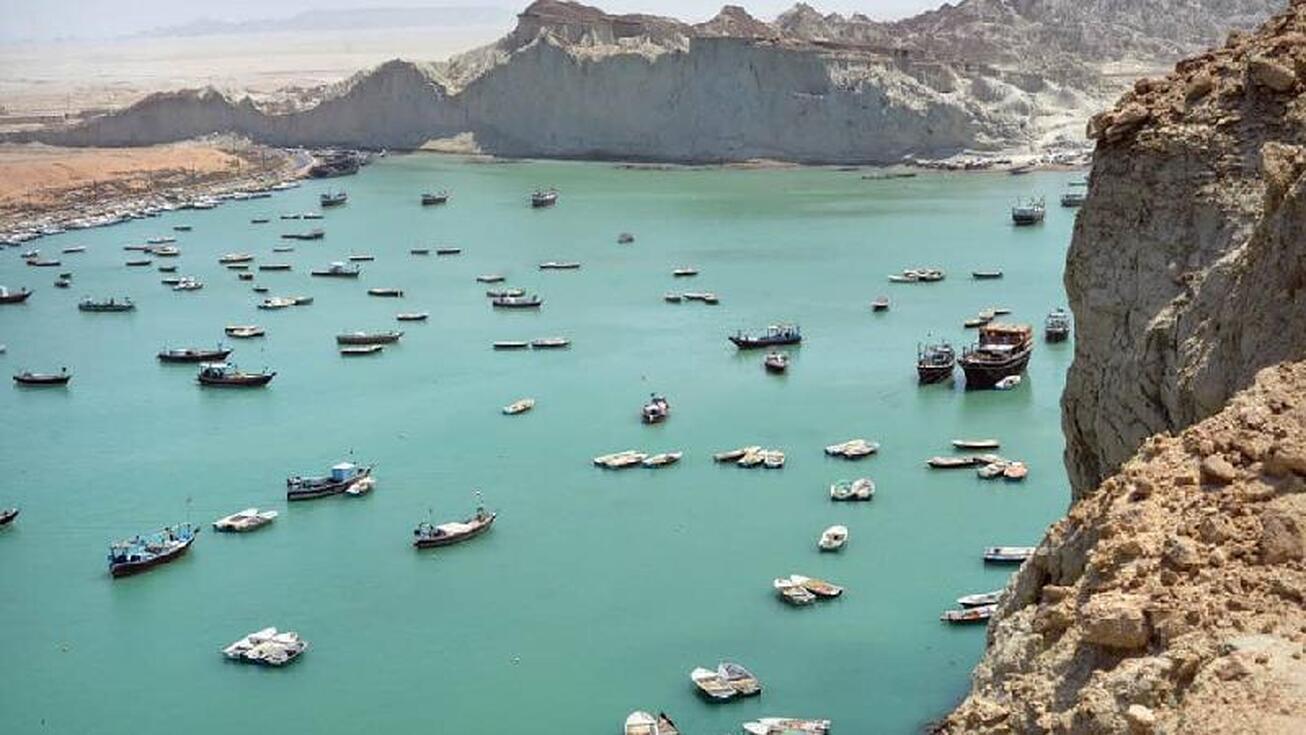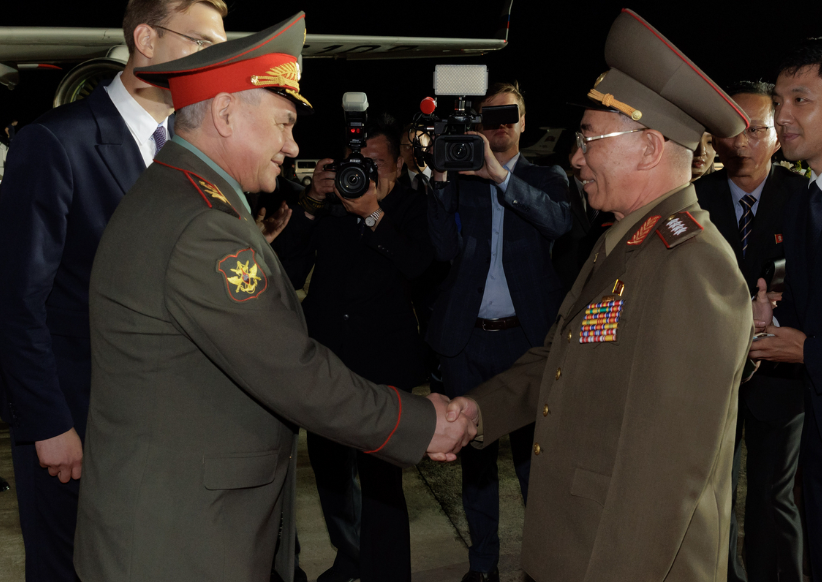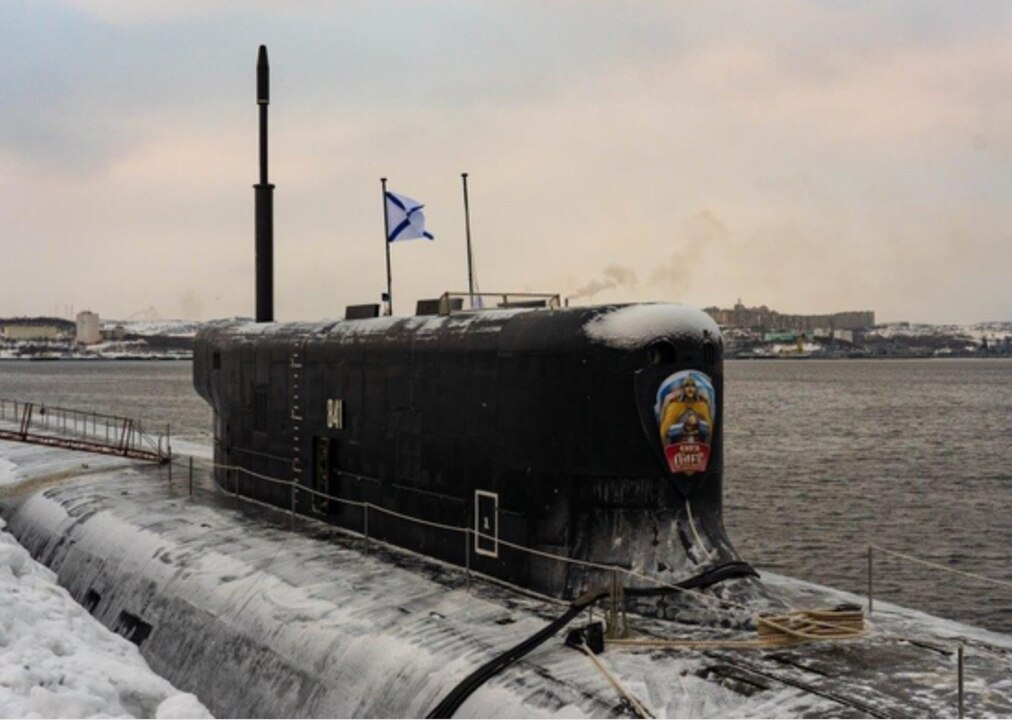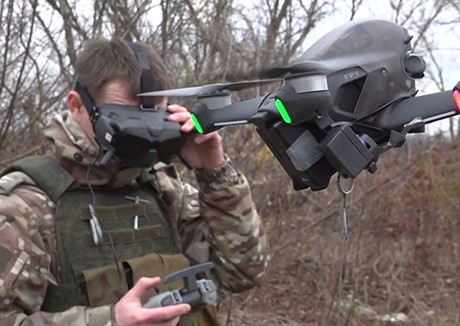
Russian Soldier with FPV UAV
“Previously, we had to independently manufacture, adapt, and “collectively develop” munitions. All this is unsafe. Now having a standard munition will make everyone’s job easier and safer…It’s no secret that some crews were blown up by their own munitions”
The accompanying excerpted article from the Russian military enthusiast website, Armeyskiy Standart, describes the role and importance of small first-person view (FPV) unmanned aerial vehicles (UAVs) that are being used extensively in Ukraine. Many of these commercially produced UAVs have been repurposed from reconnaissance duties and modified to carry various munitions that can be effectively dropped on enemy personnel and/or equipment.[i] The second accompanying excerpted article from the Russian newspaper, Izvestia, discusses Russian efforts to further the FPV concept by developing standardized munitions for FPV UAVs. As the article explains, improvised explosives for use with small FPV UAVs are unstable and have resulted in crews being “blown up” by their own munitions. The impacts of the adoption of standardized munitions for FPV UAVs will likely extend long after Russia’s special military operation in Ukraine concludes. The en masse use of FPV UAVs is likely seen by the Russian military, and many others,[ii] as necessary for tactical success on the modern battlefield, especially in the conduct of close-range reconnaissance and fires. The adoption of standardized munitions will facilitate interoperability in the burgeoning Russian UAV industry and significantly lower already relatively low manufacturing costs. Standardization is a necessary step if Russia intends to place FPV UAVs into its table of organization and equipment structure, given their effectiveness and cost for delivering close-range reconnaissance and fires.
Sources:
Rustem Klupov, “FPV— дроны завоевывают поле боя: В ходе СВО впервые широко применены новые средства поражения (FPV— UAVs are conquering the battlefield: The new weapons were widely used in the SMO for the first time),” Armeyskiy Standart (Russian military enthusiast website), 7 December 2023. https://armystandard.ru/news/20231261712-o0qQy.html
In reports of special military operations [SMO], there are more and more reports of the use of so-called FPV (First-Person View) UAVs on the line of combat contact in the tactical depth at close-range. FPVs are quadcopters, or multi-rotor UAVs, equipped with a camera that transmits video to the operator-pilot’s control device. The pilot controls the UAV using this video feed, giving him the feeling of actually being in the UAV’s cockpit…
We can say that FPV UAVs are the “know-how” of SVO. They have wide ranging capabilities to destroy a variety of enemy targets. Having a small mass, they can lift a load several times their own weight and carry it at a speed of 120–140 km/h over a distance of 15–16 km… At the same time, the cost of one UAV is on average from 30 thousand to 60 thousand rubles [$330-660].
The versatility of FPV UAVs also lies in the fact that they can carry out additional reconnaissance of an object, deliver high-precision strikes and can carry munitions for various purposes — high-explosive, shaped-charge, fragmentation, thermobaric, incendiary, and kinetic…
The ability to use FPV UAVs in the tactical depth at close-range, which is most saturated with troops, allows these UAVs to always find their target, and having the capability to employ specialized munitions to ensure the reliable destruction of a variety of objects.The comparative effectiveness of FPV UAVs with other traditional means of destruction distinguishes this type as cheaper and more pragmatic in terms of accuracy and range of use.

Roman Kretsul, Alexey Ramm, and Dmitry Astrakhan, “С легким — на подъем: для FPV-дронов начали выпускать штатные боеприпасы (Easy goings — standardized munitions have begun to be produced for FPV UAVs),” Izvestiya (major Russian daily newspaper), 1 December 2023. https://iz.ru/1613625/roman-kretcul-aleksei-ramm-dmitrii-astrakhan/s-legkim-na-podem-dlia-fpv-dronov-nachali-vypuskat-shtatnye-boepripasy
…Several enterprises of the Russian defense industry have established serial production of ammunition for FPV UAVs, regular deliveries to the troops began this fall, two sources in the military department told Izvestia and confirmed by an interlocutor in the military-industrial complex.
The new ammunition is equipped with universal mounts that allow it to be suspended under almost all types of FPV UAVs used in the special military operation zone. Now the troops are receiving fragmentation, high-explosive fragmentation and cumulative warheads. In the future, their line is planned to be expanded.
Externally, a munition for an FPV UAV looks like a tube. New munitions are delivered to the troops in special protective plastic cases. As the publication’s interlocutors noted, the main advantage of the new products is their compactness combined with high power. This is achieved through the use of special explosives. Therefore, serial produced munitions are much superior improvised munitions…
“Previously, we had to independently manufacture, adapt, and “collectively develop” munitions. All this is unsafe. Now having a standard munition will make everyone’s job easier and safer…It’s no secret that some crews were blown up by their own munitions…” said Dmitry Uskov, a volunteer and contributor to the “13 Tactical” Telegram channel, told Izvestia…[i] FPV UAVs are one of the most dynamically developing areas of unmanned aviation. The operator controls such a device while wearing virtual reality glasses, like a pilot. With the proper skill, this allows you to deliver a UAV with a warhead precisely to the target, for example, to the door of a dugout or a vulnerable projection of an armored vehicle. For most other weapon systems, such precision is unimaginable…
[i] 13 Tactical is a pro-Russia site on the Telegram platform, as found at: https://t.me/s/tactical_13/2665
Notes:
[i] For other Russian uses of drones on the battlefield, see: Charles Bartles, “Russia Plans To Add Remote Mining UAV Platoons To Engineer Units,” OE Watch, 09-2023. https://fmso.tradoc.army.mil/2023/russia-plans-to-add-remote-mining-uav-platoons-to-engineer-units/
[ii] For a recent examination of Taiwan’s position regarding drones on the battlefield, see: John Lubianetsky, “Taiwan Addressing Drone Technology Gap With China,” OE Watch, 10-2023. https://fmso.tradoc.army.mil/2024/taiwan-addressing-drone-technology-gap-with-china/
Image Information:
Image: Russian Soldier with FPV UAV
Source:
Attribution: Russian Ministry of Defense, CC BY-SA 4.0

